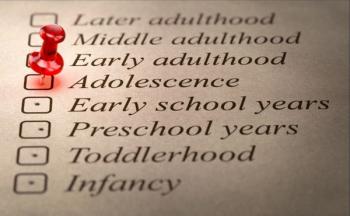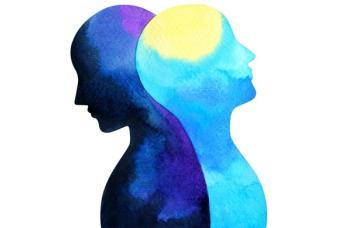
Sports Concussion: Implications of the Exam After Head Injury
As many as 300,000 sportsrelatedconcussions arediagnosed each year inthe United States.1 Thisfigure underestimatesthe true incidence, however, becausemany concussive injuries are notrecognized by the injured persons,trainers, or physicians. A recentstudy found that 4 of 5 professionalfootball players with concussionwere unaware that they had sufferedthis injury.2
As many as 300,000 sportsrelated concussions are diagnosed each year in the United States.1 This figure underestimates the true incidence, however, because many concussive injuries are not recognized by the injured persons, trainers, or physicians. A recent study found that 4 of 5 professional football players with concussion were unaware that they had suffered this injury.2 Most sports-related concussions occur among amateur and recreational athletes in settings where sophisticated diagnostic techniques are not readily available. And until recently there had been no objective way to measure the severity of or recovery from this injury; indeed, traditional neurologic examinations and mental status evaluations frequently failed to detect the subtle findings that often characterize concussion. Now we have methods, such as the McGill Concussion Protocol, that enable us to objectively evaluate the severity of an injury and to gauge the progress of recovery.3 Here, we present a symptombased approach for evaluating the severity of a concussion and for determining when the patient can safely return to the activity that caused the injury. Your careful observation and assessment of the injured athlete are critical to the prevention of catastrophic brain injury and cumulative neuropsychological deficits.
PRESENTATION
A cerebral concussion is generally defined as a brief, temporary interruption of neurologic function following head trauma; it can occur with or without loss of consciousness (LOC). Table 1 lists frequently observed features and symptoms of concussion. The patient with a concussion typically appears dazed at first and may stare blankly for several seconds or minutes. Post-traumatic amnesia (PTA) and confusion are often present with more severe concussions; the duration of PTA tends to be directly proportional to the severity of the injury. A brief LOC may also accompany more severe concussions. The patient often has a headache and dizziness or vertigo that may last for a few minutes or several hours. Although some patients may be ataxic immediately after the injury, there are generally no focal neurologic deficits. CT scans of the brain are normal; however, small petechial hemorrhages are seen on MRI in a few patients with apparently mild traumatic brain injury.4
The signs and symptoms of concussion may be confused with those of injuries to the vestibular system of the inner ear or to other head and neck structures. The initial com complaints of poor concentration, forgetfulness, and sleep-wake disturbances are usually caused by neural injuries, but headaches may also result from scalp or neck injuries. Anxiety, mood disorders, and irritability may be attributable to neuronal injury, but they may also be caused by pain from other injuries or result from psychological factors.
SEVERITY OF CONCUSSION
Several groups have developed guidelines for determining the severity of concussions. Since there is no universal agreement on concussion definition and severity grading, it is best to be familiar with one grading system and use it consistently.5 The following grading scale is based on signs and symptoms6: Grade 1. This is the mildest and most common form of concussion but the most difficult to recognize. It is defined by transient confusion with no LOC. If PTA is present, it lasts for less than 30 minutes. Grade 2. Moderate concussion is defined by one of the following features:
- LOC with complete recovery in less than 5 minutes.
- Transient confusion that lasts more than 15 minutes.
- PTA that lasts more than 30 minutes.
Grade 3. Severe concussion entails any LOC, whether brief (seconds) or prolonged (more than 5 minutes) and/or PTA that lasts more than 24 hours. The McGill Grading System further subdivides mild concussions into 3 classes.3 A Grade 1a concussion involves no PTA and only seconds of confusion. A Grade 1b concussion features PTA and/or confusion that resolves within 15 minutes. A Grade 1c concussion is characterized by postconcussion syndrome or confusion that does not resolve in 15 minutes.
MANAGEMENT Although there may be minor differences concerning grading and management of concussions, consensus has been reached on these key points7,8:
- Every athlete with a concussion should be carefully assessed by a physician.
- No athlete should be allowed to return to play if he or she exhibits any signs or symptoms of concussion.
- Regular, repeated follow-up examinations of the athlete are required after injury.
The treatment of concussion has become fairly well standardized for each grade or level of injury9: Grade 1. Remove the patient from the sports event. If he is asymptomatic 15 to 20 minutes later and has a completely normal neurologic assessment (including a detailed mental status examination) while at rest and during exertion, return to the event is permitted. If the patient has a second Grade 1 concussion in the same event, he may not resume play that day. He may return only if asymptomatic for 1 week at rest and during exertion. If 3 Grade 1 concussions occur in the same event, the patient is disallowed from play for the season. A second or third concussion, even if relatively mild, can cause severe neurologic injury or death.1 This phenomenon, known as second-impact syndrome, is particularly likely if the second or third concussion occurs during a post-concussive period of cerebral hypometabolism.6Grade 2. Remove the patient from the event for the day. Perform frequent on-site evaluations to check for signs of evolving intracranial pathology. Reexamine the patient the following day. He may return to athletic activities after 1 week if he is asymptomatic and results of a mental status examination and a detailed neurologic evaluation are normal. Order CT or MRI if headache or other relevant symptoms worsen or persist longer than 1 week. If the athlete incurs a second Grade 2 concussion, defer return to play until he has been symptom-free at rest and with exertion for at least 2 weeks. Disallow play for the remainder of the season if there is any abnormality on CT scanning or MRI consistent with brain swelling, contusion, or other intracranial pathology. Grade 3. The patient is transported to the nearest emergency de- partment for a complete neurologic evaluation, including appropriate neuroimaging procedures when indicated. These include a CT scan for most head injuries. An MRI may also be obtained, if needed, for more detail on suspected soft tissue injuries. If the results are normal, the patient may return to the sport after 1 week if the LOC was brief and he is completely asymptomatic. After a prolonged (more than 5 minutes) LOC, the athlete should be disallowed from play until asymptomatic for 2 weeks at rest and with exertion. If two Grade 3 concussions occur, bar the athlete from play until at least 1 month has passed with no symptoms. Any abnormal findings on CT or MRI warrant termination of the playing season for the athlete and active discouragement from future competition. A suggested sideline evaluation for suspected concussion appears in Table 2. This evaluation is not designed to replace a thorough neuropsychological examination, but rather to rapidly detect cognitive deficits and identify the need for further evaluation. Recent reviews of sports-related concussion stress the need for preseason evaluation of athletes who participate in sports in which concussions are common.3,6 Athletes vary tremendously in their performance on tests of memory, attention/concentration, mental processing speed, and motor speed. It is therefore difficult to determine if any post-traumatic deficits exist unless there are baseline measurements of each athlete's performance.
POSTCONCUSSION SYNDROME The symptoms of postconcussion syndrome tend to be most noticeable in patients with relatively mild head injuries. Patients may experience headache, dizziness, difficulty in concentration, impaired memory, variable amnesia, depression, apathy, and anxiety. In the first few days after a concussion, early deficits in arousal are often present, but they usually clear rapidly. Impairments in sleep-wake cycles and attention, however, tend to be more long-lasting.10 Concussion has also been shown to cause disturbances in new learning, attention, and speed of information processing. Since patients with these complaints generally have normal results on simple clinical tests (digit span, current events, 3 words in 3 minutes), clinicians sometimes assume that they are exaggerating-- or malingering.11
In some instances, especially after auto accidents with legal or financial implications, malingering can be a very difficult phenomenon to document. In contrast, athletes may deny important symptoms in order to be allowed to return to activities sooner. This is why objective, rather than subjective, evaluations are so important. Even a single mild head injury may cause cognitive deficits that can be documented with neuropsychological tests within 24 hours of the injury. But rapid return to preconcussion performance level is often observed 5 to 10 days after concussion even if the patient is still symptomatic.3 After 7 to 10 days, only more complex mental functions may be abnormal, but these deficits generally also resolve during the next several weeks to months.10 Patients with a brief LOC and PTA of less than 1 hour usually recover within 6 to 12 weeks if there are no complications.12 Patients with LOC longer than 10 minutes and/or duration of PTA for more than 4 to 6 hours, however, may require months or even years to return to normal, and some may never do so completely.13 By 3 months after the injury, neurologic recovery--as assessed by standard neurophysiologic measures-- is usually substantial, and only a small number of patients still have limitations. Even patients who recover well, however, are susceptible to occasional impairment during periods of increased physiologic or psychological stress. There is no specific therapy for these mild residual states other than treatment of the somatic symptoms and advice about stress management.10
PERSISTENT POSTCONCUSSION SYNDROME
Although most patients who have a mild to moderate concussion become asymptomatic within a few minutes or days, approximately 10% to 15% have symptoms that persist for more than 1 year.10 Indeed, Ingebrigtsen et al14 noted that 62% of 100 consecutive patients with minor head injuries had postconcussive symptoms for more than 3 months; of these, 40% had 3 or more symptoms. The more commonly occurring symptoms included headache (42%); forgetfulness/ poor memory (36%); fatigue/tiring easily (30%); irritability/easily angered (28%); dizziness (26%); and poor concentration (25%). The psychological manifestations, such as irritability, depression, nervousness, discouragement, and anger, occur frequently and can be particularly troublesome. Consequently, management of persistent postconcussion syndrome may involve a combination of somatic medical treatments, psychological/psychiatric therapy,15 and pragmatic occupational interventions.10
References:
REFERENCES:1. Thurman DJ, Branche CM, Sneizek JE. The epidemiology of sports-related traumatic brain injuries in the United States: recent developments. J Head Trauma Rehabil. 1998;13:1-8.
2. Delaney SJ, Lacroix VJ, Leclerc S, Johnston KM. Concussions during the 1997 Canadian Football League season. Clin J Sport Med. 2000;10:9-14.
3. Johnston KM, Lassonde M, Ptito A. A contemporary neurosurgical approach to sport-related head injury: the McGill concussion protocol. J Am Coll Surg. 2001;192:515-524.
4. Wilberger JE, Rothfus WE, Tabas J, et al. Acute tissue tear hemorrhages of the brain: computed tomography and clinicopathological correlations. Neurosurgery. 1990;27:208-213.
5. Leclerc S, Lassonde M, Delaney JS, et al. Recommendations for grading of concussion in athletes. Sports Med. 2001;31:629-636.
6. Maroon JC, Lovell MR, Norwig J, et al. Cerebral concussion in athletes: evaluation and neuropsychological testing. Neurosurgery. 2000;47:659-672.
7. Collins MW, Grindel SH, Lovell MR, et al. Relationship between concussion and neuropsychological performance in college football players. JAMA. 1999;282:964-970.
8. Wojtys EM, Hovda D, Landry G, et al. Concussion in sports. Am J Sports Med. 1999;27:676-687.
9. Quality Standards Subcommittee, American Academy of Neurology. Practice parameter: the management of concussion in sports (summary statement). Neurology. 1997;48:581-585.
10. Alexander MP. Mild traumatic brain injury: pathophysiology, natural history, and clinical management. Neurology. 1995;45:1253-1260.
11. Kirsch TD, Migliore S, Hogan TM. Head injury. In: Tintinalli JE, ed. Emergency Medicine, a Comprehensive Study Guide. 5th ed. New York: McGraw-Hill; 2000:1631-1645.
12. Levin HS, Mattis S, Ruff RM, et al. Neurobehavioral outcome following minor head injury. J Neurosurg. 1987;66:234-243.
13. Hugenholtz H, Stuss DT, Stethem LL, Richard MT. How long does it take to recover from a mild concussion? Neurosurgery. 1988;22:853-858.
14. Ingebrigtsen T, Waterloo K, Marup-Jensen S, et al. Quantification of post-concussion symptoms 3 months after minor head injury in 100 consecutive patients. J Neurol. 1998;245:609-612.
15. Newcombe F, Rabbitt P, Briggs M. Minor head injury: pathophysiological or iatrogenic sequelae? J Neurol Neurosurg Psychiatry. 1994;57:709-716.
Newsletter
Enhance your clinical practice with the Patient Care newsletter, offering the latest evidence-based guidelines, diagnostic insights, and treatment strategies for primary care physicians.























































































































































































































































































